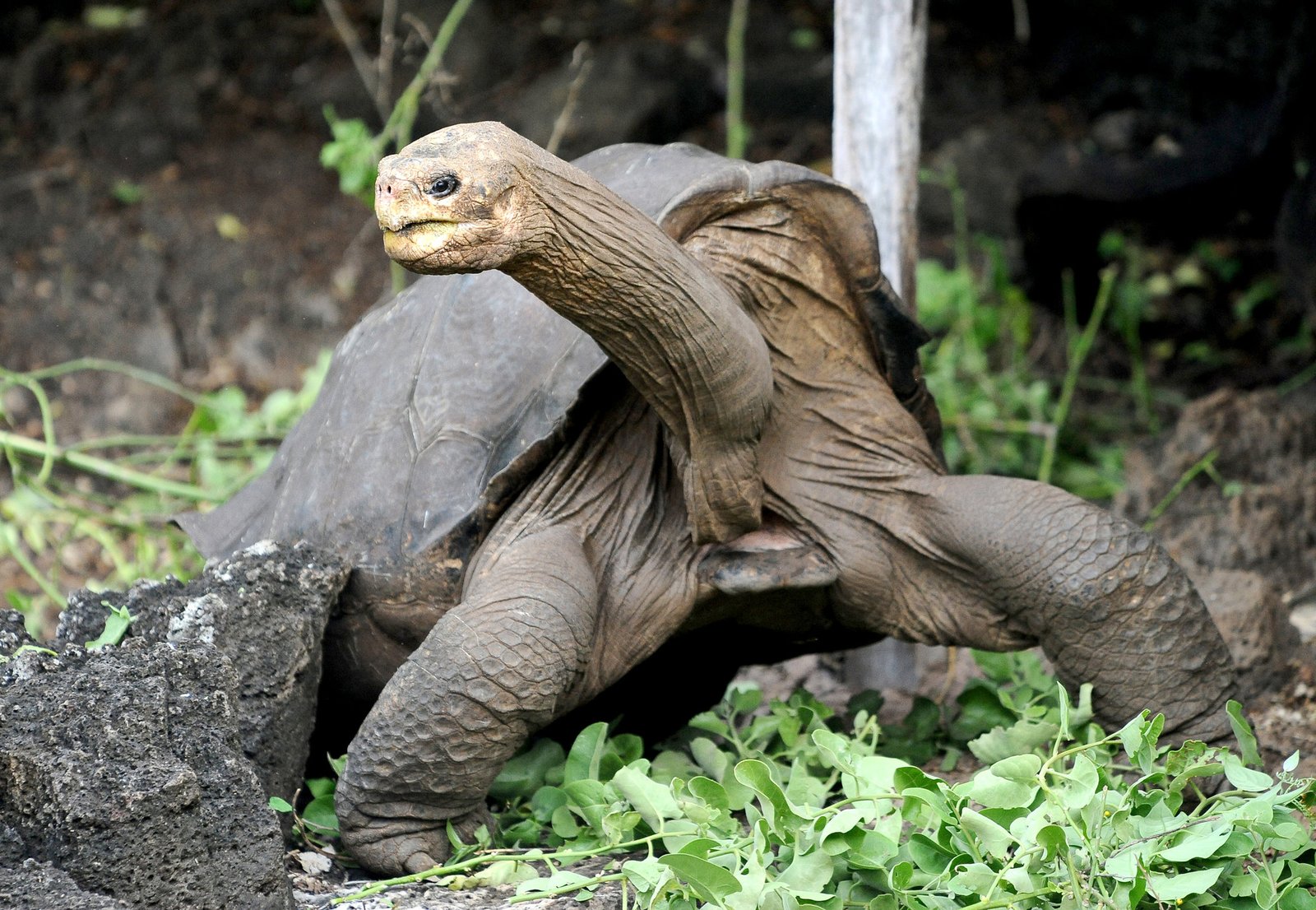Unveiling the Legacy of the Pinta Island Tortoise: The Lost Giant of the Galápagos
Categories:
- Reptiles
- Extinct Species
- Galápagos Wildlife
- Conservation
Introduction:
The Pinta Island Tortoise, scientifically known as Chelonoidis abingdonii, was a giant tortoise species native to Pinta Island in the Galápagos archipelago. These tortoises were renowned for their impressive size and distinctive shell shapes, which varied between populations on different islands. The last known individual of this species, famously named Lonesome George, passed away in 2012, marking the extinction of the Pinta Island Tortoise. This species’ decline highlights the profound impact of human activity on isolated ecosystems and the urgent need for conservation efforts.
Facts:
| Attribute | Details |
|---|---|
| Scientific Name | Chelonoidis abingdonii |
| Common Names | Pinta Island Tortoise, Abingdon Island Tortoise |
| Year Declared Extinct | 2012 |
| Kingdom | Animalia |
| Phylum | Chordata |
| Class | Reptilia |
| Order | Testudines |
| Family | Testudinidae |
| Genus | Chelonoidis |
| Species | C. abingdonii |
| Natural History and Origin | Galápagos Islands, Ecuador |
| Physical Information | Giant tortoise with distinctive shell shapes |
| Appearance | Brown or gray domed shell, large limbs |
| Scientist Names | Charles Darwin, Rollo Beck |
| Region | Pinta Island, Galápagos |
Appearance:
The Pinta Island Tortoise was a remarkable giant, with a large, domed shell that varied in shape depending on its habitat. These tortoises had gray or brown shells, which provided camouflage in their natural environment. Their legs were sturdy and covered in scales, adapted for supporting their massive bodies. Male tortoises were larger than females, reaching lengths of up to 6 feet and weights exceeding 400 pounds. Their distinctive shell and imposing size made them iconic symbols of the Galápagos Islands.
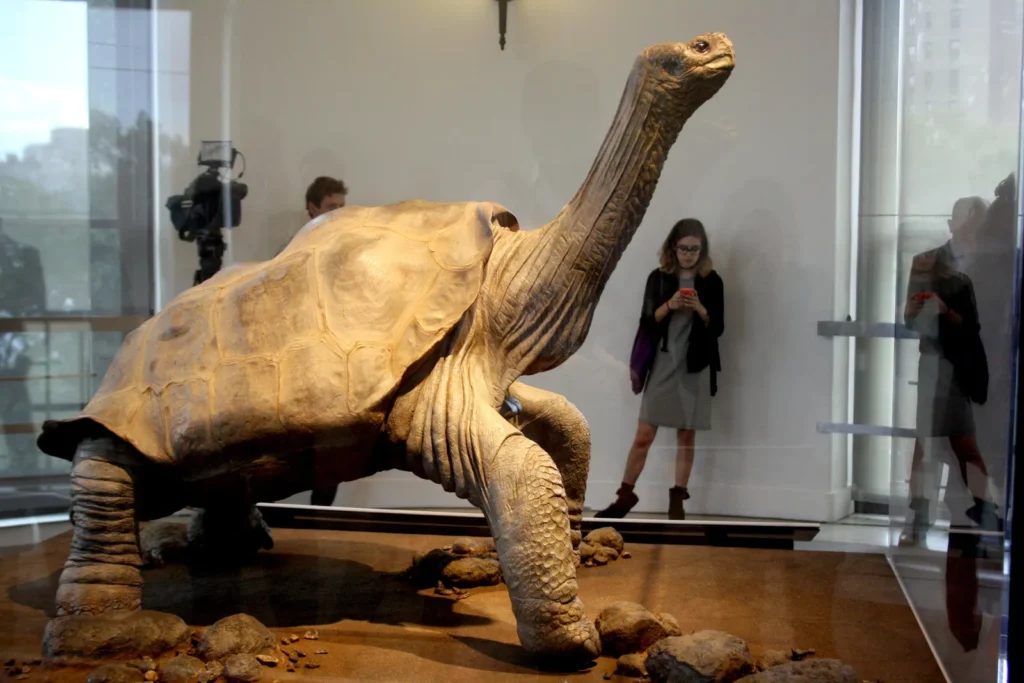
Distribution:
The Pinta Island Tortoise was endemic to Pinta Island, one of the northern islands in the Galápagos archipelago. The isolated nature of the island allowed this species to evolve unique characteristics distinct from other Galápagos tortoise populations. The introduction of non-native species and human activities led to the rapid decline of their population, ultimately resulting in their extinction.
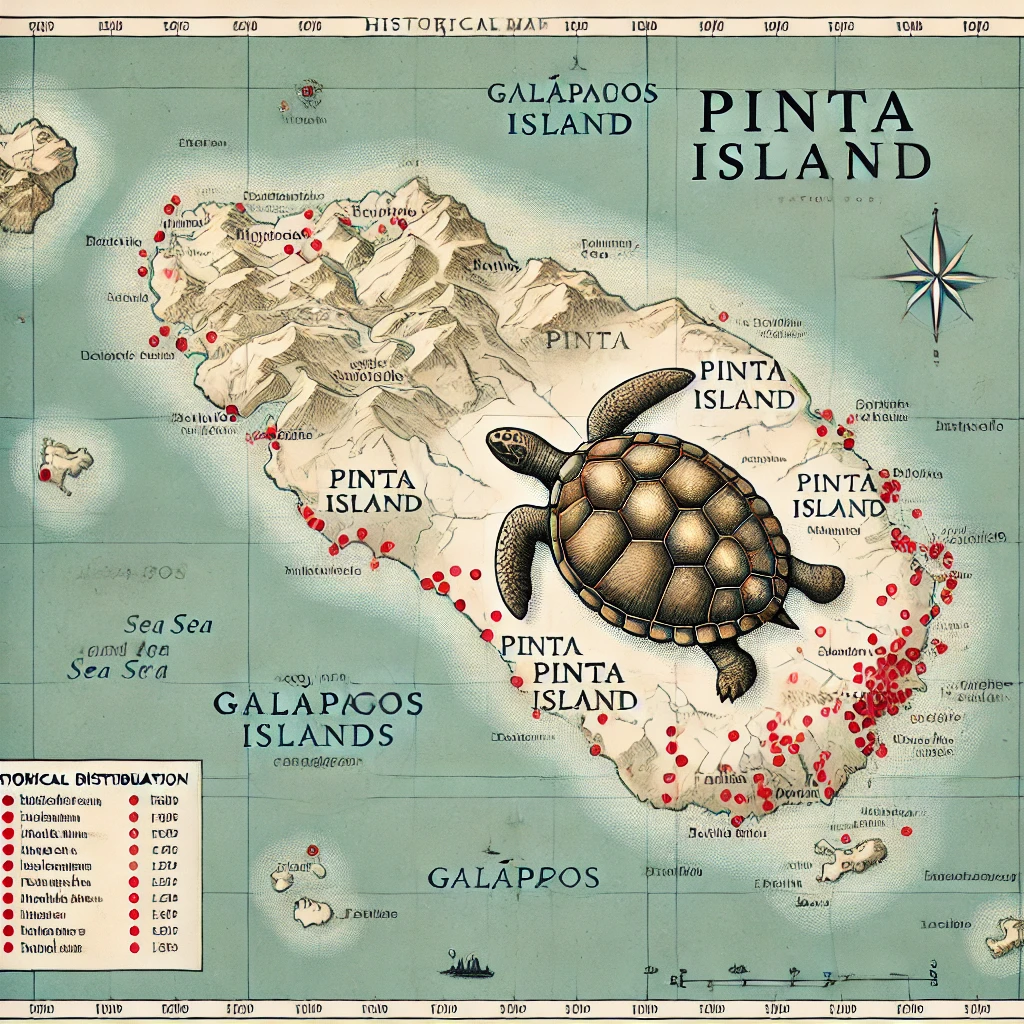
Habits and Lifestyle:
Pinta Island Tortoises were primarily herbivorous, feeding on a variety of vegetation, including cacti, grasses, and leaves. They were known for their slow movement and long lifespan, often living for over 100 years. These tortoises played a crucial role in their ecosystem by dispersing seeds and maintaining vegetation structure. Their solitary nature and slow reproduction rate made them particularly vulnerable to environmental changes and human activities.
Physical Characteristics:
The Pinta Island Tortoise was one of the largest tortoise species, characterized by its massive size and distinctive shell. The domed shell provided protection against predators and harsh environmental conditions. Their limbs were strong and equipped with large, clawed feet, enabling them to navigate the rocky terrain of Pinta Island. The tortoises had long necks, allowing them to reach vegetation at varying heights.
Diet and Nutrition:
As herbivores, Pinta Island Tortoises had a diet consisting mainly of cacti, grasses, leaves, and fruits. Their slow metabolism allowed them to survive on limited food sources, and they could endure long periods without water. The availability of food influenced their distribution and behavior, with tortoises migrating to areas with abundant vegetation.
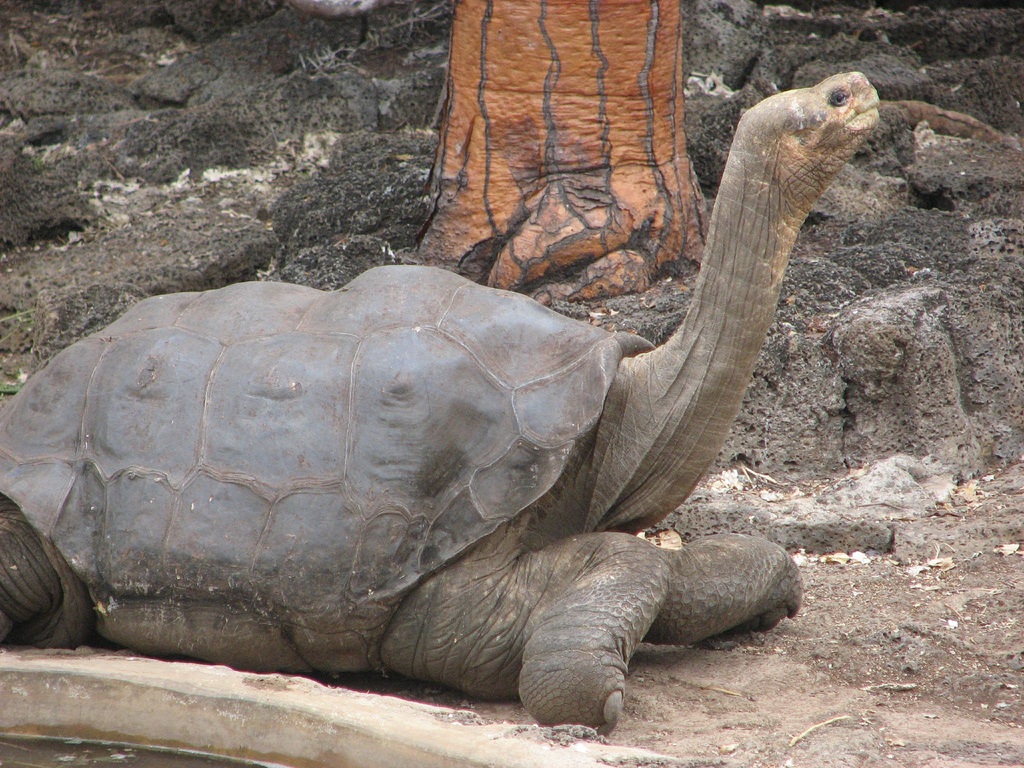
Behavior:
Pinta Island Tortoises were known for their solitary behavior, often seen basking in the sun or slowly moving through their habitat in search of food. They had a low reproductive rate, with females laying only a few eggs each year. The young tortoises were highly vulnerable to predators, and their survival depended on the availability of safe nesting sites. The tortoises’ long lifespan and slow growth rate made them symbols of longevity and resilience.
Cause of Extinction:
The extinction of the Pinta Island Tortoise was primarily caused by human activities, including hunting and the introduction of non-native species such as goats, which competed for food and destroyed their habitat. The last known individual, Lonesome George, was discovered in 1971, but despite extensive efforts to find a mate and conserve the species, no other individuals were found. The death of Lonesome George in 2012 marked the official extinction of the species, underscoring the devastating impact of human interference on isolated ecosystems.
FAQs:
| Question | Answer |
|---|---|
| What caused the extinction of the Pinta Island Tortoise? | The extinction was caused by hunting, habitat destruction, and the introduction of non-native species. |
| When was the last Pinta Island Tortoise declared extinct? | The last Pinta Island Tortoise, Lonesome George, died in 2012. |
| What did the Pinta Island Tortoise eat? | Its diet consisted mainly of cacti, grasses, leaves, and fruits. |
| Where was the Pinta Island Tortoise found? | It was found only on Pinta Island in the Galápagos archipelago. |
| How long did the Pinta Island Tortoise live? | Pinta Island Tortoises could live for over 100 years. |
| Why is the extinction of the Pinta Island Tortoise significant? | Its extinction highlights the impact of human activities on vulnerable species and the importance of conservation efforts. |
| Who was Lonesome George? | Lonesome George was the last known individual of the Pinta Island Tortoise species. |
| Can the Pinta Island Tortoise be reintroduced? | Reintroduction is unlikely due to the extinction of the species and the continued threat of habitat destruction. |
Related Animals:
- Galápagos Tortoise (Chelonoidis nigra)
- Española Giant Tortoise (Chelonoidis hoodensis)
- Volcán Wolf Giant Tortoise (Chelonoidis becki)
- Galápagos Green Turtle (Chelonia mydas agassisi)
References:
- Galápagos Conservancy – Pinta Island Tortoise
- IUCN Red List – Chelonoidis abingdonii
- National Geographic – Lonesome George
- BBC News – Lonesome George: Pinta Island Tortoise
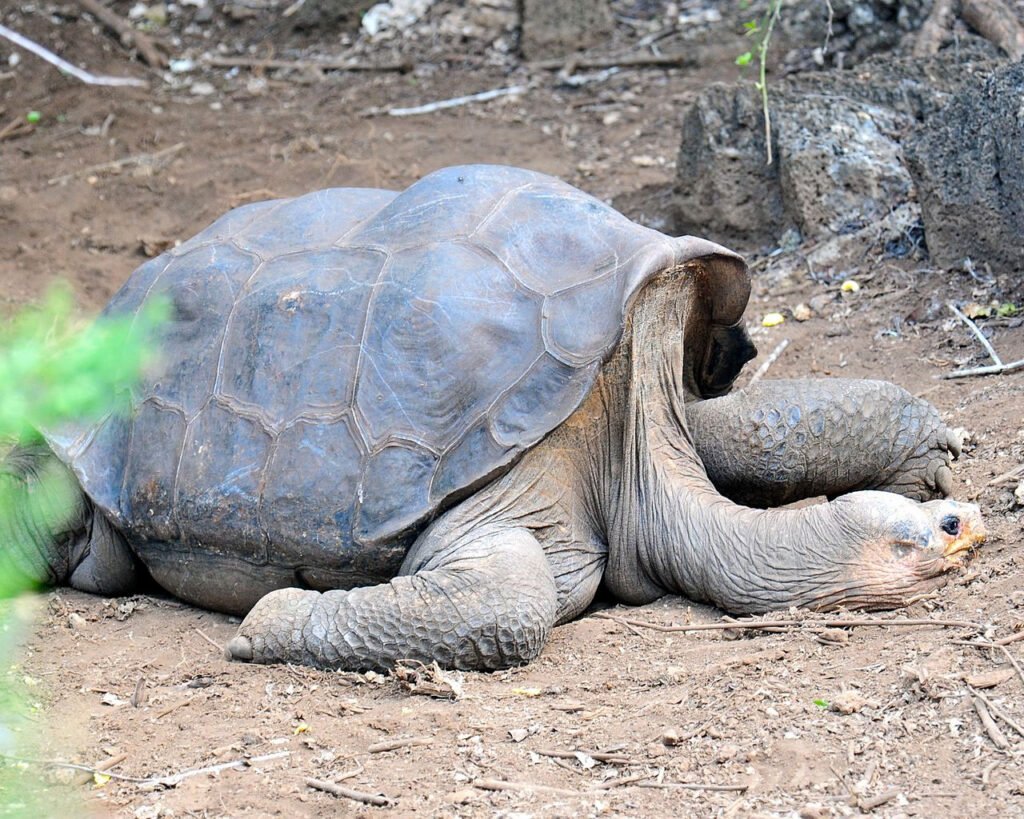
Views: 28
